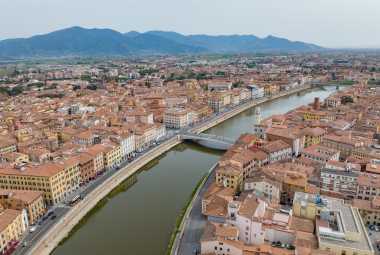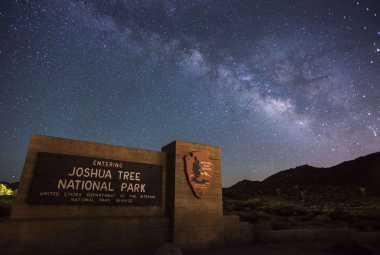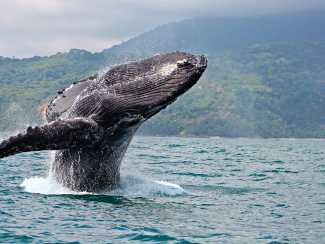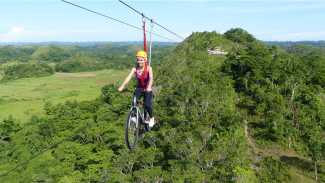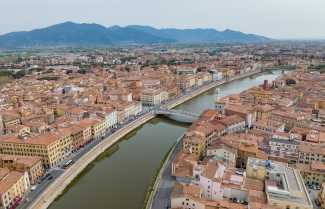Image by roughguides.com
*Vacation Mode is a for-profit site. It contains paid banner advertisements that are generated and managed by a third-party network. This site also includes relevant affiliate links (both in the content and on the sidebar) all of which we do our best to clearly mark as such.
Overview of Hurricanes in Costa Rica.
Costa Rica is vulnerable to the destructive power of hurricanes. While the chances of a hurricane directly hitting this Central American nation are slim, it has had some brush-ups with these powerful storms in recent years. Learn about hurricane probabilities, signs of oncoming storms, and precautions you should take to stay safe.
While hurricanes remain uncommon in Costa Rica, the Caribbean and Pacific coasts have experienced some brush-ups with hurricanes in recent years. Hurricane Otto struck Costa Rica on November 24th, 2016 causing destruction along the niche from Nicaragua to Panama. In 2012, Hurricane Alma became the first hurricane of that season to affect Central America as well as reach Costa Rica. Preparedness is key for hurricane season in Costa Rica and it’s important to know when hurricane season starts and what the chances are of a hurricane hitting.
Hurricane Season
Costa Rican hurricane season technically starts in May, but hurricanes typically follow the annual Caribbean hurricane season pattern which runs from June 1 to November
During this time period, the Caribbean and Eastern Pacific regions are especially vulnerable to tropical cyclone activity due to weather patterns connected to the El Niño-Southern Oscillation climate cycle. Hurricanes that do affect Costa Rica generally form in the Caribbean, where hurricane season activity is most potent and active. Once storms reach Costa Rica they typically lose strength, but can still bring heavy rains, high winds and dangerous storm surges. Residents should always stay alert during hurricane season to ensure they have proper measures in place should a storm strike.
Costa Rica’s hurricane season runs from May to November, with August and September experiencing the most frequent weather activity. In recent years, no hurricanes have directly impacted Costa Rica, but there have been some close calls as storms have passed just off the coasts. The last major storm to hit was Hurricane Otto in 2016, which weakened to a tropical depression by the time it made landfall on Costa Rica’s Southern Caribbean Coast near the border of Nicaragua. That same year saw an unusual series of two tropical depressions that together caused heavy rains and flooding in various parts of the country.
El Niño years

While the country experiences occasional heavy rains and flooding, it has been spared a major hurricane in recent decades. This is thanks mostly to the presence of El Niño years, which tend to weaken the formation of tropical storms in this part of the world. However, global warming could result in more extreme weather activity off Costa Rica's pacific and Caribbean coasts, meaning that residents should be prepared for potentially more intense hurricanes each season.
Every season, the country is closely monitored for any signs of tropical storms and extreme weather patterns. In the event that a hurricane does approach, The Costa Rican National Emergency Commission (CNE) springs into action to prepare and protect its citizens. This includes organizing evacuations in vulnerable areas, closing schools, forbidding large public gatherings, and creating strategies for restoring public services such as electricity and running water after the storm has passed. CNE also works with civil defense teams from each region or department within the country to devise localized response plans for protection against hurricanes.
Frequency of Hurricanes
Costa Rica typically experiences a couple of hurricanes each season, though many are weak and may not cause any damage. When they do approach, strong winds can create fallen trees via uprooting and intense rainstorms that can cause mudslides or overflowing rivers. Luckily, most of Costa Rica's large cities are protected by its mountainous terrain which helps to mitigate the severity of extreme weather. The country is also equipped with early warning systems for tsunamis, lightning storms, and floods so Costa Ricans are often prepared before any major damage occurs.
Flooding

Despite some of its protective features, Costa Rica suffers from flooding, biodiversity and agricultural losses, and impaired infrastructure every year as a result of natural disasters. Fortunately, the nation's elevation (making it slighter and less susceptible to damage) along with environmental protection policy practices have helped to significantly reduce the long-term impacts of hurricanes on buildings and property. In addition, due to its geographical location outside the Caribbean Sea, the number of hurricane landfalls has drastically decreased over the past few decades adding an extra layer of added security for Costa Rican citizens.
Tropical Cyclones
Nevertheless, Costa Ricans are still affected by tropical cyclones that originate in the Gulf of Mexico or the Caribbean and make landfall every now and again. For example, in 2012 category two Hurricane Carlos made landfall causing extensive flooding through large parts of the Central Valley area and affecting over 18,000 residents. The hurricane also triggered a small number of mudslides resulting in two fatalities. Similarly, after forming within the Pacific Ocean close to the country’s border with Nicaragua in 2017, an unnamed storm caused uprooting trees and electricity poles leaving almost 12,000 customers temporarily without energy supplies.
Stay prepared
For this reason, it’s important for Costa Ricans to stay prepared for hurricane season. Information on appropriate precautions and the latest forecasts should be found from reliable sources such as the National Emergency Commission (CNE), Red Cross, local radio stations and meteorological services. With regular awareness and proper precautionary measures in place, Costa Rican citizens can be rest assured knowing they are taking all necessary steps before, during and after a hurricane season.
Being in the easternmost part of Central America, Costa Rica is situated near the Caribbean Sea which is prone to hurricanes. During late spring and early fall, the country faces a higher probability of being exposed to tropical disturbances in the Pacific and Atlantic Oceans. While hurricane activity tends to be sporadic year-to-year, Costa Rica experiences an average of one storm every 1-2 years due to its close proximity to these areas. Typically, storms that do affect Costa Rica travel north through the Caribbean Sea and reach landfall at a location on the Central American coast between Nicaragua and Panama.


